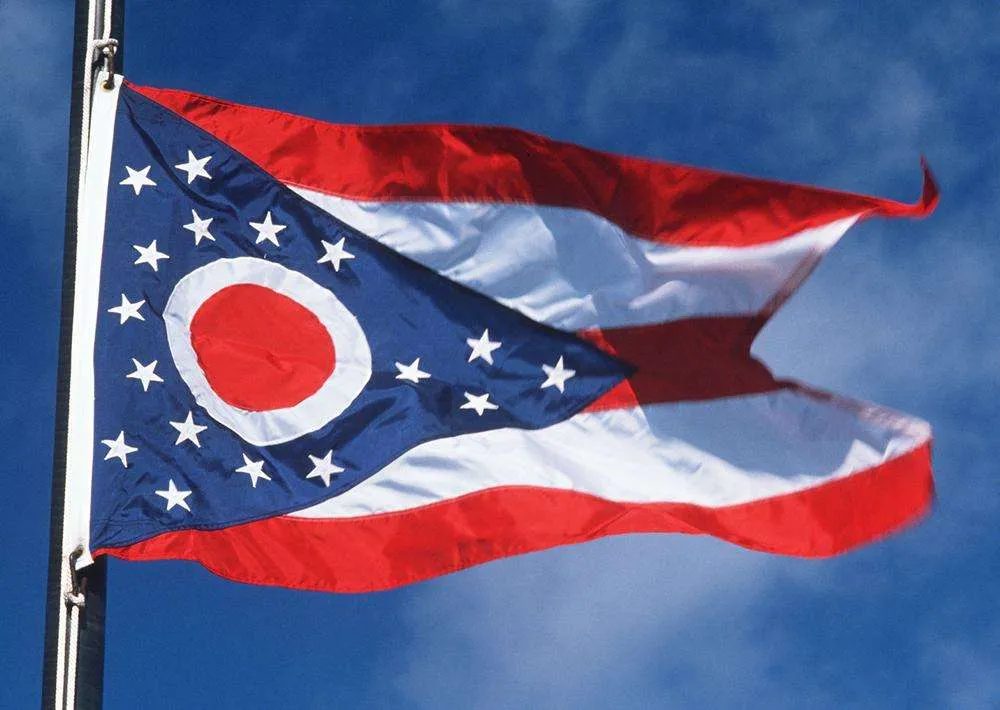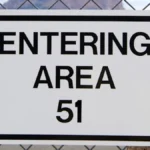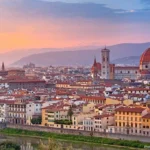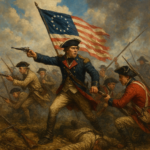
Welcome to our exploration of the Buckeye State! Ohio, often referred to as the heart of it all, is a treasure trove of fascinating facts and unique history. From its vibrant cities to its rich cultural heritage, Ohio offers a diverse array of experiences that reflect the spirit of America. Whether you’re a lifelong resident or a curious traveler, there’s always something new to learn about this Midwestern gem. In this blog post, we’ll uncover 25 interesting facts about Ohio that highlight its significance, charm, and the quirky elements that make it truly one-of-a-kind. So, let’s dive in and discover what makes Ohio so special!
Statehood: Ohio became the 17th state of the United States on March 1, 1803. The state was formed from the Northwest Territory and was the first state created from that territory, which was established by the Northwest Ordinance of 1787. Ohio’s admission to the Union marked a significant moment in U.S. history, as it represented the westward expansion of the nation and the development of new states beyond the original thirteen colonies.
Capital City: The state capital of Ohio is Columbus, which was chosen as the capital in 1816 due to its central location, making it accessible from all parts of the state. Columbus is the largest city in Ohio and is known for its diverse economy, vibrant arts scene, and educational institutions, including The Ohio State University. The city has experienced significant growth and development over the years, becoming a hub for technology and innovation.
Buckeye State: Ohio is known as the “Buckeye State,” a nickname derived from the Ohio buckeye tree (Aesculus glabra), which is native to the region. The buckeye tree produces nuts that resemble the eye of a deer, and the term “buckeye” has become a symbol of pride for Ohioans. The buckeye is also associated with good luck, and many residents carry buckeye nuts as a charm. The state’s mascot, the Buckeye, is a prominent symbol in sports, particularly in relation to The Ohio State University.
Largest Cities: The largest city in Ohio is Columbus, with a population of approximately 905,000. Following Columbus, Cleveland and Cincinnati are the second and third largest cities, with populations of around 380,000 and 300,000, respectively. Each city has its unique cultural identity and economic strengths, with Columbus known for its education and healthcare sectors, Cleveland for its manufacturing and healthcare, and Cincinnati for its finance and marketing industries.
Rock and Roll Hall of Fame: The Rock and Roll Hall of Fame, located in Cleveland, Ohio, is a museum dedicated to the history and cultural significance of rock music. Established in 1983, it honors influential artists, producers, and other significant figures in the music industry. The museum features exhibits on legendary musicians, memorabilia, and interactive displays that celebrate the evolution of rock and roll. It attracts hundreds of thousands of visitors annually, contributing to Cleveland’s cultural landscape.
Population: Ohio has a population of approximately 11.8 million people, making it the seventh most populous state in the U.S. The state has a diverse demographic makeup, with significant populations of African Americans, Hispanics, and immigrants from various backgrounds. Ohio’s population density varies across the state, with urban areas like Columbus, Cleveland, and Cincinnati being more densely populated, while rural areas exhibit lower population densities.
Counties: Ohio is divided into 88 counties, which serve as administrative regions for local governance. Each county has its own elected officials and functions to provide services to residents. The counties vary in size and population, with Cuyahoga County (home to Cleveland) being the most populous, while counties like Vinton and Harrison are among the least populated. This county structure plays a crucial role in local governance and community services throughout the state.
Cuyahoga River Fire: The Cuyahoga River in Ohio famously caught fire in 1969 due to pollution and industrial waste, drawing national attention to environmental issues. This incident highlighted the need for environmental reform and led to significant changes in pollution control regulations. The fire was a catalyst for the environmental movement in the United States, contributing to the establishment of the Environmental Protection Agency (EPA) and the passage of the Clean Water Act in 1972.
Geography: Ohio boasts a diverse geography that includes plains, hills, and over 3,000 miles of rivers. The state features a mix of flat farmland in the northwest, rolling hills in the central and eastern regions, and river valleys. The Ohio River, which forms the state’s southern border, is a significant waterway that has historically played a vital role in transportation and trade. Ohio’s varied landscape supports a wide range of ecosystems and recreational opportunities.
Agriculture: Ohio is a major producer of agricultural products, particularly soybeans, corn, and hogs. The state ranks among the top producers of these crops in the United States, benefiting from its fertile soil and favorable climate. Ohio’s agricultural sector is a critical part of the state’s economy, providing jobs and contributing to food production. The state is also known for its dairy farming, poultry, and various specialty crops, making it a diverse agricultural hub.
Presidential Birthplace: Ohio is known as the birthplace of several U.S. presidents, including Ulysses S. Grant, the 18th president, and William Howard Taft, the 27th president. Grant was born in Point Pleasant in 1822 and became a prominent Union general during the Civil War before his presidency from 1869 to 1877. Taft was born in Cincinnati in 1857 and served as president from 1909 to 1913, later becoming the Chief Justice of the United States, making him the only person to hold both offices. Ohio’s historical significance in presidential politics has earned it the nickname “Mother of Presidents.”
Total Area: Ohio has a total area of about 44,825 square miles, making it the 34th largest state in the U.S. The state’s geography is characterized by its flat plains, rolling hills, and numerous rivers and lakes. Ohio’s location in the Midwest places it at a crossroads for transportation and trade, with major highways and railroads facilitating movement across the state. The diverse landscape also supports a variety of recreational activities, from hiking in the Appalachian foothills to boating on Lake Erie.
Ambulance Service: Ohio is home to the first ambulance service in the United States, which was established in 1865 in Cincinnati. The service was created by the city’s police department to provide rapid medical assistance to the injured. This innovation laid the groundwork for modern emergency medical services (EMS) and has since evolved into a critical component of healthcare systems across the country. Today, EMS services operate in various forms, providing timely medical care to those in need.
Ohio State University: The Ohio State University, located in Columbus, is one of the largest universities in the United States by enrollment, with over 60,000 students. Founded in 1870, it is a leading research institution known for its academic programs, particularly in fields such as engineering, business, and health sciences. The university plays a significant role in the state’s economy and workforce development, and its athletic teams, known as the Buckeyes, have a strong following, particularly in college football.
Manufacturing Sector: Ohio has a robust manufacturing sector, particularly in automobile and steel production. The state has a long history of industrialization, with major cities like Cleveland and Toledo serving as centers for manufacturing. Ohio is home to several automobile manufacturers and suppliers, contributing significantly to the U.S. automotive industry. The steel industry also played a crucial role in the state’s economy, particularly in the 20th century, and continues to be an important sector today.
Amusement Parks: Ohio is known for its amusement parks, with Cedar Point being one of the most famous. Located in Sandusky, Cedar Point boasts 17 roller coasters, making it known as “The Roller Coaster Capital of the World.” The park attracts millions of visitors each year and features a wide range of rides and attractions, catering to thrill-seekers and families alike. Other notable parks in Ohio include Kings Island, known for its family-friendly attractions, and Cedar Point Shores Waterpark.
State Bird: Ohio’s state bird is the Northern Cardinal (Cardinalis cardinalis), a vibrant red songbird that is easily recognizable and beloved by many. The Northern Cardinal is known for its distinct color and melodious song, making it a favorite among birdwatchers. The bird is also a symbol of joy and hope, often associated with positive emotions. It is found throughout Ohio and is a year-round resident, contributing to the state’s natural beauty.
State Flower: The state flower of Ohio is the Scarlet Carnation (Dianthus caryophyllus), which was designated as the state flower in 1904. The carnation is known for its bright red color and fragrant blooms, symbolizing love and admiration. The flower has historical significance in Ohio, as it was worn by President William Howard Taft during his inauguration. The Scarlet Carnation is often used in floral arrangements and represents the state’s rich agricultural heritage.
Great Serpent Mound: The Great Serpent Mound is a prehistoric effigy mound located in Adams County, Ohio. It is one of the largest effigy mounds in North America, measuring about 1,348 feet in length and shaped like a serpent with an undulating body and a spiral at its end. The mound is believed to have been constructed by ancient Native American cultures, possibly the Adena or Fort Ancient peoples, and is thought to have astronomical or ceremonial significance. It is a designated National Historic Landmark and attracts visitors interested in archaeology and history.
Amish Population: Ohio is known for its significant Amish population, particularly in Holmes County, which has one of the largest Amish communities in the United States. The Amish are a traditionalist Christian group known for their simple lifestyle, rejection of modern technology, and commitment to community and family values. They primarily engage in farming and craftsmanship, producing goods such as furniture, quilts, and baked goods. The Amish way of life has drawn interest from tourists, who visit to experience their culture, shop at local markets, and enjoy the scenic countryside. The presence of the Amish contributes to Ohio’s cultural diversity and offers insights into alternative ways of living.
Famous Athletes: Ohio has produced several famous athletes who have made significant impacts in various sports. LeBron James, born in Akron in 1984, is widely regarded as one of the greatest basketball players of all time, having won multiple NBA championships and MVP awards. Jesse Owens, born in Oakville in 1913, gained fame as a track and field athlete, winning four gold medals at the 1936 Berlin Olympics, which challenged the prevailing notions of racial superiority at the time. Other notable athletes from Ohio include NFL player Joe Montana and tennis champion Chris Evert, showcasing the state’s rich sports heritage.
State Motto: Ohio’s state motto is “With God, all things are possible.” This phrase reflects the values and beliefs of many Ohioans and emphasizes faith and resilience. The motto was adopted in 1959 and is featured on the state seal. It serves as a reminder of the importance of hope and determination in overcoming challenges, resonating with the state’s history of perseverance through economic and social changes.
Wright Brothers: Ohio is recognized as the birthplace of aviation, being home to the Wright brothers, Orville and Wilbur Wright. They were born in Dayton, Ohio, and are credited with inventing and building the world’s first successful powered airplane, the Wright Flyer, which took its inaugural flight on December 17, 1903, in Kitty Hawk, North Carolina. The Wright brothers’ pioneering work in aeronautics laid the foundation for modern aviation and has had a lasting impact on transportation and technology. The National Museum of the U.S. Air Force in Dayton features exhibits on their achievements and contributions to flight.
Ohio River: The Ohio River forms part of the state’s southern border with West Virginia and Kentucky, stretching approximately 981 miles from Pittsburgh, Pennsylvania, to Cairo, Illinois, where it meets the Mississippi River. The river has historically served as a vital transportation route for trade and commerce, facilitating the movement of goods and resources. It played a significant role in the westward expansion of the United States and is an important source of water for the surrounding communities. The Ohio River is also a popular destination for recreational activities, including boating, fishing, and hiking along its banks.
Aerospace Industry: Ohio has a strong presence in the aerospace industry, with significant contributions to research, development, and manufacturing. The state is home to NASA’s Glenn Research Center in Cleveland, which focuses on aerospace technology and research. Ohio also hosts several aerospace companies and defense contractors, making it a key player in the national aerospace sector. The state’s workforce and educational institutions support innovation in aviation and space exploration, contributing to advancements in technology and engineering.
Frequently Asked Questions About Ohio
Here are some of the most common questions people have about the state of Ohio:
General Questions
- What is the capital of Ohio?
- Columbus is the capital of Ohio.
- What is the largest city in Ohio?
- Columbus is also the largest city in Ohio.
- What is the nickname of Ohio?
- Ohio is often called the “Buckeye State” due to the abundance of Ohio Buckeye trees.
- What is the official state animal of Ohio?
- The official state animal of Ohio is the Eastern Gray Squirrel.
- What is the official state bird of Ohio?
- The official state bird of Ohio is the Northern Cardinal.
Geography and Climate
- What are the major geographic regions of Ohio?
- Ohio is divided into several geographic regions, including:
- The Great Lakes Region (north)
- The Appalachian Plateau (southeast)
- The Central Plains Region (central and western)
- Ohio is divided into several geographic regions, including:
- What is the climate like in Ohio?
- Ohio has a humid continental climate, characterized by warm summers and cold winters. The weather can be quite variable, with frequent changes in temperature and precipitation.
Economy and Industry
- What are the major industries in Ohio?
- Ohio’s economy is diverse, with significant contributions from manufacturing, agriculture, and services. Major industries include:
- Automotive manufacturing
- Aerospace
- Agriculture (corn, soybeans, livestock)
- Healthcare
- Finance
- Ohio’s economy is diverse, with significant contributions from manufacturing, agriculture, and services. Major industries include:
- What are the major cities in Ohio?
- Aside from Columbus, other major cities in Ohio include:
- Cleveland
- Cincinnati
- Toledo
- Akron
- Dayton
- Aside from Columbus, other major cities in Ohio include:
Culture and Attractions
- What are some popular tourist attractions in Ohio?
- Ohio offers a variety of attractions, including:
- The Rock and Roll Hall of Fame in Cleveland
- The Cincinnati Zoo and Botanical Garden
- The Ohio State University campus
- The Pro Football Hall of Fame in Canton
- Cedar Point amusement park
- The Ohio State Fair
- Ohio offers a variety of attractions, including:
- What are some famous people from Ohio?
- Ohio has produced many famous people, including:
- Neil Armstrong (astronaut)
- LeBron James (basketball player)
- Steven Spielberg (film director)
- Doris Day (actress and singer)
- Jack Nicklaus (golfer)
- Ohio has produced many famous people, including:
Education
- What are the major universities in Ohio?
- Ohio is home to several prestigious universities, including:
- The Ohio State University
- The University of Cincinnati
- Case Western Reserve University
- Ohio University
- Bowling Green State University
- Ohio is home to several prestigious universities, including:
If you have any other questions about Ohio, feel free to ask!









